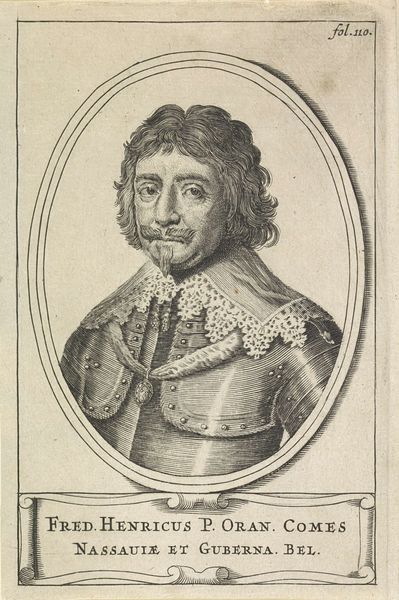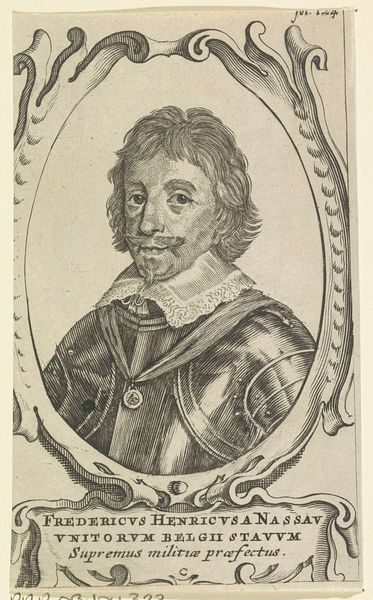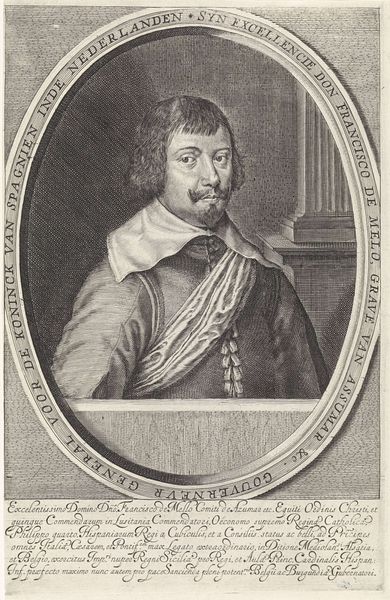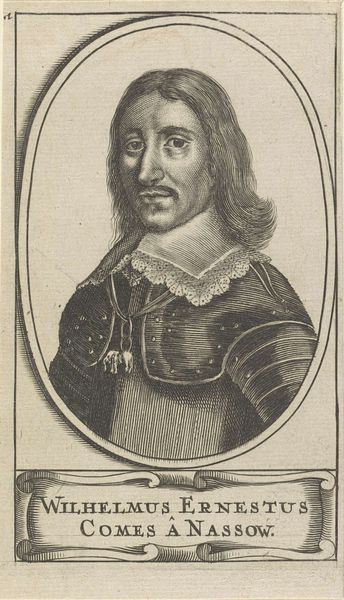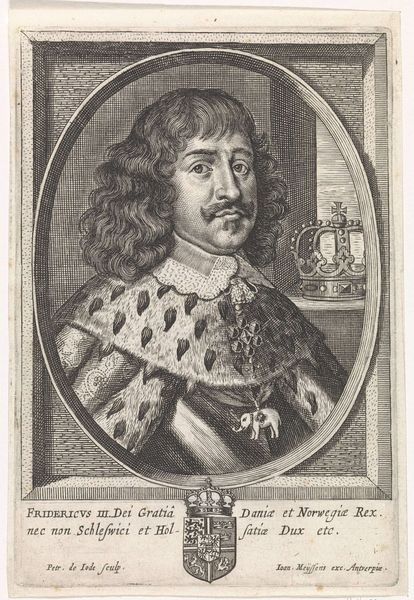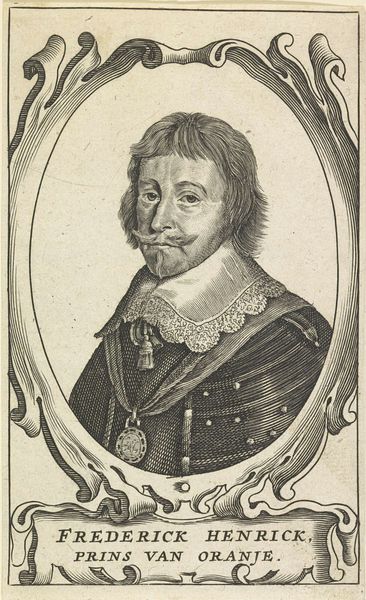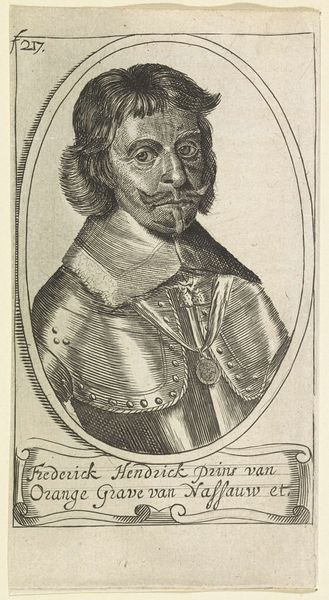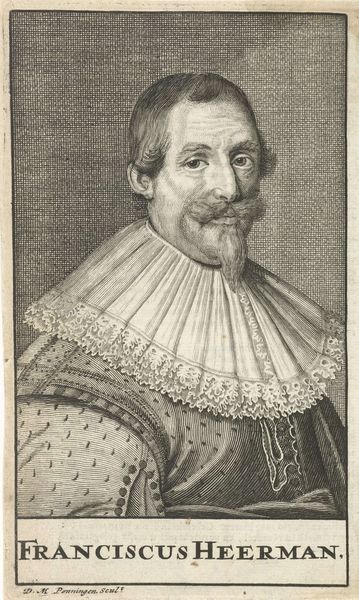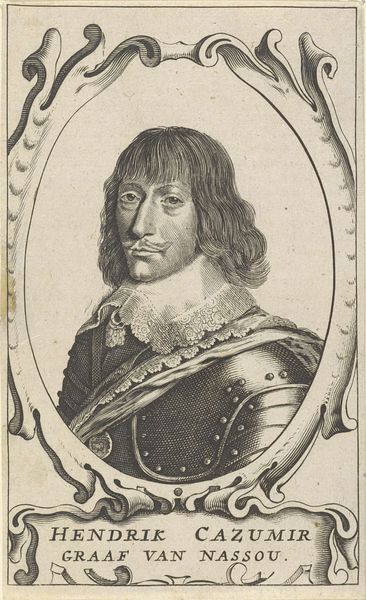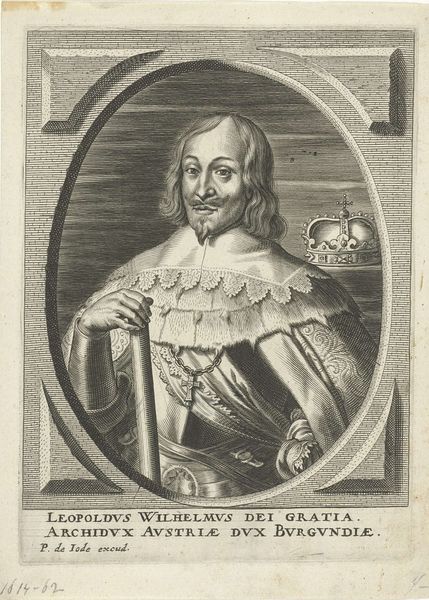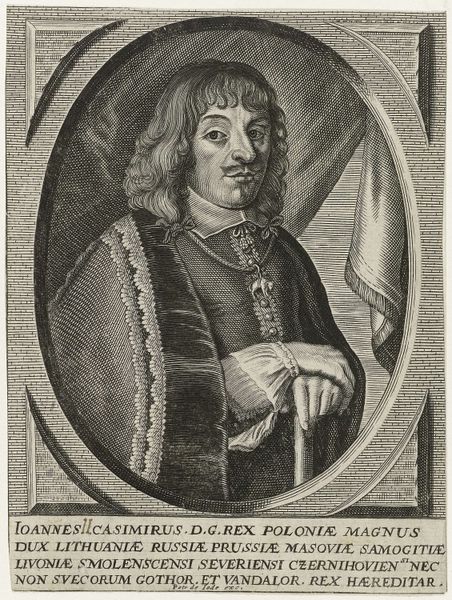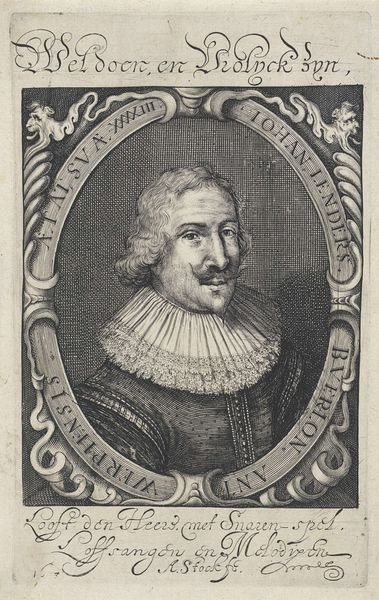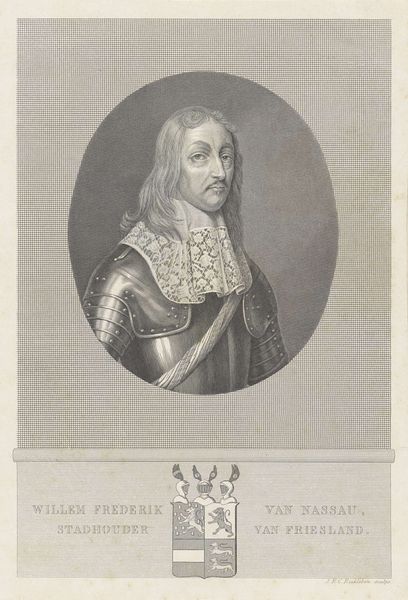
print, engraving
#
portrait
#
baroque
#
dutch-golden-age
# print
#
old engraving style
#
portrait drawing
#
history-painting
#
engraving
Dimensions: height 122 mm, width 72 mm
Copyright: Rijks Museum: Open Domain
Curator: Standing before us is a 1664 engraving titled "Portret van Frederik Hendrik, prins van Oranje," or Portrait of Frederick Henry, Prince of Orange, by Cornelis van Dalen I. Editor: He seems rather… mild? Despite all the trappings of nobility – the lace collar, the armor, the grand medallion – his eyes convey a surprising gentleness. It's like he's slightly amused, or maybe a bit weary. Curator: That perceived mildness speaks volumes about Frederick Henry’s image-making. As Prince of Orange, he understood the power of projecting authority tempered with accessibility. This print circulated widely, reinforcing his carefully cultivated image as a benevolent leader. Editor: Interesting! So it was deliberate, this subtle PR move etched into copper? It reminds me of those carefully constructed Instagram profiles. It also humanizes the man somehow. The imperfections – the slightly droopy eyes, the almost-fussy mustache – make him feel real, not just a distant figure from a history book. Curator: Precisely. Van Dalen was a skilled portraitist who understood how to convey status, while suggesting individual character. Consider the context, too: engravings played a vital role in disseminating information and constructing reputations during the Dutch Golden Age. Images like this solidified Frederick Henry's legacy. Editor: And there’s something captivating in the detail achieved through all those tiny, precise lines. It’s like a miniature landscape carved onto his face, hinting at the complex landscape of his rule. And that oval frame – it's such a definitive border, containing all that power… and vulnerability. Curator: The oval format was conventional for portraits at this time. Framing devices such as this contributed to the subject’s symbolic enclosure and elevation above ordinary mortals. The cherubs on the title plaque hint at heavenly approval, an endorsement that reinforces his divinely sanctioned right to govern. Editor: Makes me think about the original context of display. This probably hung on walls. It now survives within these museum walls—a stark contrast in its function: back then propaganda for authority, now material evidence that invites us to reconsider who gets elevated and why. Curator: Exactly. This print provides insight into the social and political machinery of image-making during a transformative period in Dutch history. Editor: And, perhaps, it still prompts us to think about the images we choose to propagate, and how those images shape our understanding of power… and ourselves.
Comments
No comments
Be the first to comment and join the conversation on the ultimate creative platform.
